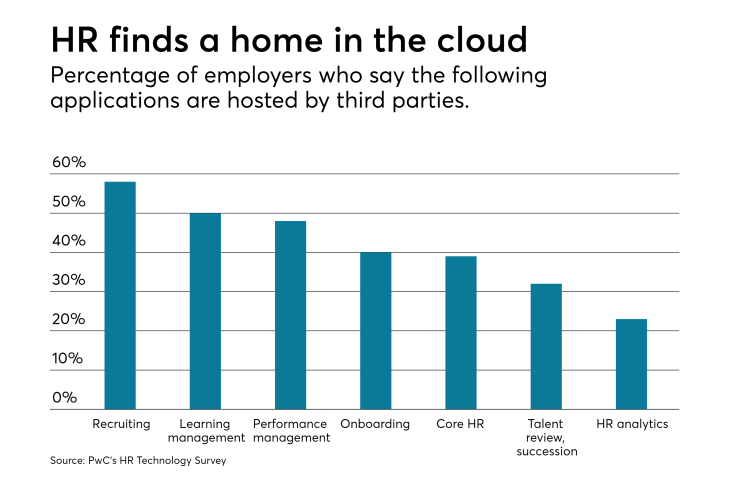A no-cost or free employee benefits administration solution may sound like a great idea, especially for an employer struggling with labor intensive processes and a limited budget. But free benefits administration solutions are often difficult to integrate into existing HR systems, and as a result, may do little to improve processes.
An effective benefits administration solution should have the capability to collect employee information and benefits elections, and transmit that data to payroll or human resources systems as well as to third parties such as insurance carriers and Affordable Care Act reporting vendors.
Consultants and carriers utilize free benefits administration software or services as a strategy to retain business. However, an employer may give up a significant amount of control over employee data and strategic management of benefit plans.
An employer that relies on a free benefits administration solution also may struggle to sever ties with the owner of the technology if a decision is made to partner with other carriers or even change consultants in the future. Since a consultant or carrier in such an arrangement owns the technology, the company can lose electronic access to their benefits administration solution and all the current and historical data, requiring an employer to collect all new data from employees.
Since free benefits administration solutions are separate from payroll/HR solutions, data needs to flow between systems for accuracy and efficiency. Unfortunately, automated data file feeds between payroll/HR systems and the free benefits administration solution are not widely available or often limited which can impact data integrity.

Automated file feeds also are an additional expense as the payroll/HR vendor will charge a fee to build an integration portal. While the data can be shared between systems with manual bulk imports and exports, these processes are challenging to adopt, and many HR teams end up entering the data by hand. As a result, the management of data between the systems is prone to mistakes. Some consultants do perform enrollment services on behalf of their clients as part of the free benefits administration solution provided. This could include hand-keying employee additions, terminations, and changes with carriers. While this may alleviate some of the HR workload, it creates uncertainty over who is liable for errors.
For example, if the consultant fails to terminate an employee in a timely manner, the employer will be responsible for additional claims and or premium expenses. The employer could also fall out of compliance with federal and state regulations, such as COBRA. As such, it’s important for employers with this type of arrangement to ask their consultant to sign an indemnity or hold harmless agreement to minimize liability exposure. Unfortunately, in many cases, consultants are unwilling to sign an agreement to take responsibility for their own errors.
Advantages of owning your benefits administration solution
Having ownership of your employee data gives an organization control to manage processes and relationships with carriers and consultants. An organization that receives benefits administration at gratis from another party has no ownership control over the employee data and is at a major disadvantage if it decides to terminate the relationship.
Often the consultant will refuse to allow the employer to retain access to their employee data. A fully automated solution that is independent of third-party consultants eliminates errors caused by imported and manual data entry, providing time for the HR staff to focus on other strategic initiatives. To gain efficiency and maximize cost savings, an organization needs to select a system that will integrate with its existing payroll/HR technologies as well as with the carrier’s and third-party administrator’s systems.
Benefits administration solution options
Traditionally, there have been two schools of thought when it comes to selecting a benefits administration solution. The first is a standalone benefits administration solution that allows an employer to select the products and services which best fits the needs of their business. Generally, a standalone option is best for employers with complex benefit plan structures. Integration with third-party systems can easily be built; real-time data exchange between certain HR/payroll providers and standalone benefits administration solutions is becoming increasingly common.
The second approach is to consider a holistic solution that includes payroll, HR, benefits administration and ACA reporting, to name a few. An all-in-one solution is advantageous as all the modules are within a single system, allowing data to flow easily without the need for hand-keying or further integration.
As many human capital management providers realize that their in-house benefits administration is not as strong as other standalone options in the market, they are building better (in some cases real-time) integrations with standalone platforms and providing the impression of a single solution. This is great for employers with a sophisticated benefits administration process who want an all-in-one platform.
Selecting a benefits administration solution
The process of selecting a benefits administration solution should begin with an outline of an organization’s current needs including integrations with other systems and third parties, ACA reporting compliance and any other related processes.
Take into consideration how complex are the business processes? How does HR manage the day-to-day tasks? Next, the organization needs to identify and prioritize the areas that need improvement. After the areas of improvement are identified, the organization can explore various solutions available by engaging benefits consultants and existing vendors for recommendations.





